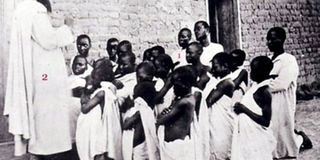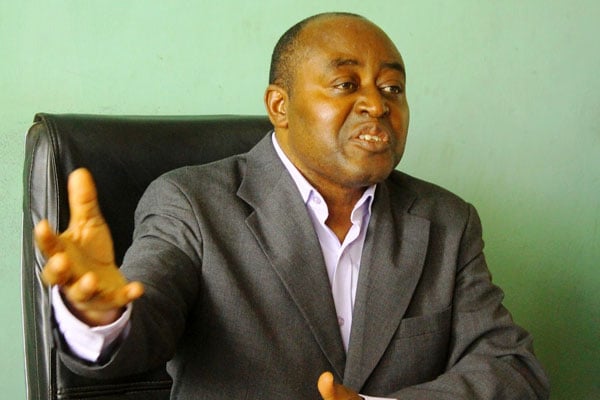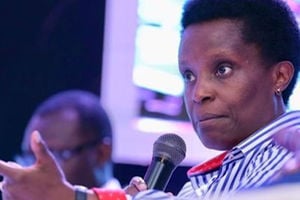First Ugandans to study abroad

The Bishop with some of the young converts in Buganda from which he picked the 11 boys to go and study abroad. Courtesy Photo
What you need to know:
Historic voyage. Ugandans sought foreign education before the birth of the country called Uganda. This week, we take you 125 years back when a group of 11 young boys from Buganda endured a nine-months journey to Carthage in Tunisia through France and Italy
When Christianity came to Uganda, the missionaries combined it with education. Not only did they want to teach their converts religion, but also other matters.
When the Roman Catholic Church missionaries set foot in Buganda, one of their leaders, also known as the founder of the Catholic Church in Buganda/Uganda, Léon-Antoine-Augustin-Siméon Livinhac, took it upon himself to expose some of his converts to further foreign education.
In 1890, a group of 11 Baganda Roman Catholic youth converts were handpicked by Bishop Livinhac to go and study abroad. They had to trek from Uganda to the East African coast, weathering life on the sea to get to Europe on a journey that lasted nine months.
The 11 boys set off on the grilling journey to France, then Rome and finally to Algiers, where they were separated, with others going to Malta.
The 11 boys are also believed to be the first Ugandans to go to Europe and the first to have met the head of the Catholic Church. To get to their final destination, they went through Paris, Rome and then Tunisia.
While at Lyons in France, one of the boys, Leo Lwanga, describes the experience of having his photograph taken for the first time in Europe. His account was first published in Uganda by the Uganda Argus newspaper in its independence supplementary issue of October 9, 1962.
“You will be happy to hear how one makes those pictures of which you are fond, I shall tell you. There is a box which has three legs; it is dressed in a black cloth. The one who wants to make the picture says to us, you sit there in front of the box, you, and the others stand up and look this way.”
“Then he hides his head in the black cloth, in which the box is clothed, and then he brings a paper holding it, also hidden in under the cloth. May be he feared that those who were there will learn how to make the pictures.
Suddenly, he says to us “Do not move.” He opens the box on the other side, he closes it and he says it is finished. All our faces had entered the box, it takes a long time to make them come out, and we haven’t seen them.”
First destination
The group’s first European destination was Paris, where they arrived in September 1890, nine months after leaving Buganda.
“We were allowed one month of rest in Paris.
Some of us were sick, not being used to the food, and the weather. We were being looked at the way we looked at the whites when they first came to our land. After a month in Paris, we went to Rome, where we met Pope Leo XIII,” Lwanga narrates.
According to the 1908 entry in the Catholic information archives, it is stated that the 11 boys were destined to go to Carthage in Tunisia, where the Roman Catholic Church had opened an Institute in 1876. The institute was founded with the sole purpose of training young Africans. It was founded by Cardinal Lavigeria, the founder of the White Fathers’ mission.
According to the Uganda Argus independence supplement, when the group went to Rome to meet the Pontiff, he suggested to Bishop Livinhac, who was their guide and translator, that “some of the boys from Buganda be considered as possible candidates for religious life and possibly for priesthood.”
Final destinations
Of the 11 boys, seven followed the Pontiff’s suggestion to the letter by joining the White Fathers’ training base in North Africa. Among those who took to priesthood was Tobie Kizza, who happened to be the last surviving member of the group, dying in 1961 at Virika Cathedral in Kabarole District.
“Other boys went to Malta to train as medical doctors. But before they could finish their course, the institute was closed and they were transferred back to France, where they completed their training. Those who opted for priesthood stayed in Carthage and were trained at the White Fathers’ mission.
The 11 Ugandans
Yowana Ngapi
Izidoro Kayinabiri
Charles Bazibubura
Etyeni Mungoya
Marsaile Ntwatwa
Yozefu Kyobe
Karoli Nampagi
Tobie Kizza
Stefan Kiwanuka
Leo Lwanga
Paulo Kiwanuka




